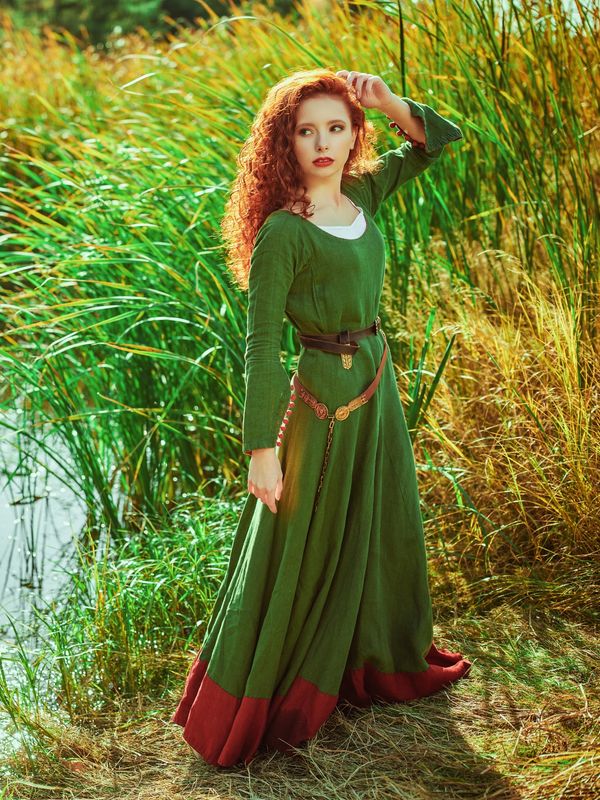What They Wore

The léine
The léine (pronounced lay-nuh) was the basic piece of clothing worn by both men and women alike. It was generally made of linen with embroidery around the hem, sleeves, and neck. The hem could be worn to the ankle or at knee length, though any shorter usually meant you were from a lower class. They could have tight sleeves or no sleeves at all, and some had a large enough collar to make a hood.

Male Léine
Men either wore the léine to the ankles or shorter at the knee. To make it short, they would drag it up through the belt until the hem reached the knee. They were generally worn over bare legs, though some, especially soldiers, might wear them over trews (triúbhas), which were tight fitting pants.

Female Léine
Women would wear the léine to the ankles. The neclines could be round, square, or v-necked

The Brat
The brat was a rectangular cloak or shawl that could be worn loose around the shoulders or fastened with a brooch at the chest or shoulder. Some had a hood or at least enough material at the neck so that they could be pulled up over the head. Worn over the léine, they were generally made from wool and like the léine were embroidered around the hem
What They Wore

The Short Brat
Most warriors would wear a short brat over their leine. Some would go bare legged while others would wear triúbhas , a type of trousers underneath.

The Long Brat
Those who were of a higher status usually wore a longer brat. Notice the extensive embroidery at the hem and the large brooch on his left shoulder.

Female Brat
Women generally wore a longer brat as well to match their leine . Contrary to popular belief, it would most likely be in a bright color and embroidered around the hem like that of the male above.

The Triúbhas
The triúbhas (pronounced trews) were a type of trousers that were sometimes worn under a knee length léine (or bare chested), though not always. In many cases they would be of a plaid or striped material.
Cookie Policy
This website uses cookies. By continuing to use this site, you accept our use of cookies.